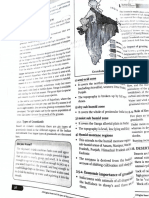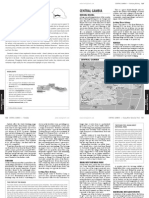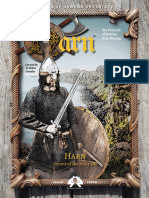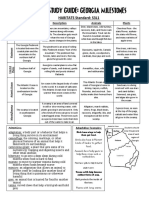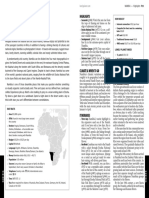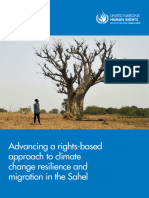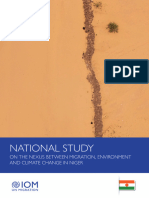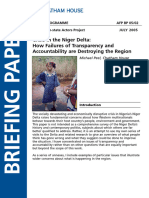BIRDING ZIMBABWE’S EASTERN HIGHLANDS
Text by Penn Lloyd
Clinging to the southern foot of the Chimanimani mountains, where the Haroni and Rusitu rivers meet to flow into Mozambique, are Zimbabwe’s last fragments of lowland evergreen forest. A birding Mecca, these small but luxuriant forest patches harbour a list of regulars that include Barred Cuckoo, Green Coucal, Eastern Honeyguide, African Broadbill, Angola Pitta, Pel’s Fishing Owl, Slender Bulbul, Black-headed Apalis, Vanga Flycatcher, Woodwards’ Batis and Chestnut-fronted Helmetshrike. Getting there requires some determination though. The track, for it cannot be called a road over the last 20 kilometres, is har-rowing at best, impassable at worst. A 4x4 is advisable, but certainly no guaran-tee that you will make it there (or back again!) should rain set in.With the forests surrounded by communal land, courtesy requires that you stop off at the local District Administration or the police/military post at Vhimba to announce your presence in the area. There are also no facilities, so if you decide to camp rough, introduce yourself to the closest household and enquire where you might do so.The people here are poor and live a simple life. The lands they have cleared of forest are highly fertile. A variety of fruits, such as avocados, bananas, papaws, mangoes and naartjies are sold as cash crops to the Zimbabwe Farmer’s Union. Sweet potatoes, madumbe (yams) and maize are the staples, with indige-nous sorghums and millets extensively cultivated for home-brewing. As the pop-ulation expands, so the pressure on the remaining forest increases; the people need the land to make a living. The borders of the Haroni and Rusitu Forest Reserves exist on paper only, and most of the former has already fallen to a banana plantation. Until the locals derive a more direct benefit from the for-ests, the attrition will continue. A farmer who invited me in to his humble home-stead asked me which bird I most want-ed to see. I indicated the appearance and proportions of the Silvery-cheeked Hornbill. ‘The Gakamira!’ he exclaimed a little incredulously. His advice on how to find it: ‘When you walk in the forest, look for the pips of my papaws on the ground. When you find them, look up into the tree and the Gakamira will be there’.
H
ighland
L
ow-down
H
azy with the smoke of countless wood-fired hearths, the lowlands of Mozambique sprawl from the Indian Ocean to the foot of an escarpment that runs a wavy course from the Drakensberg range of South Africa to the Ahmar Mountains of Ethiopia. Here, punctured and separated from the highlands to the north and south by the mighty Zambezi and Limpopo river valleys, the Eastern Highlands of Zimbabwe rise up from 300 metres to over 2 500 metres, to form a natural border with its more prostrate neighbour. Associated with this altitudinal range is a diversity of habitats, from lowland evergreen forest to miombo (
Brachystegia
) woodland to Afro-montane evergreen forest, and finally montane grassland. Each supports a unique community of birds all packed within a relatively small area, making the Eastern Highlands one of the subcontinent’s premier birding regions. Furthermore, the isolation of the mountains means that a number of species, found otherwise only in distant South Africa or East Africa, sur-vive here as long-isolated populations.
H
ighland
L
ow-down
H
azy with the smoke of countless wood-fired hearths, the lowlands of Mozambique sprawl from the Indian Ocean to the foot of an escarpment that runs a wavy course from the Drakensberg range of South Africa to the Ahmar Mountains of Ethiopia. Here, punctured and separated from the highlands to the north and south by the mighty Zambezi and Limpopo river valleys, the Eastern Highlands of Zimbabwe rise up from 300 metres to over 2 500 metres, to form a natural border with its more prostrate neighbour. Associated with this altitudinal range is a diversity of habitats, from lowland evergreen forest to miombo (
Brachystegia
) woodland to Afro-montane evergreen forest, and finally montane grassland. Each supports a unique community of birds all packed within a relatively small area, making the Eastern Highlands one of the subcontinent’s premier birding regions. Furthermore, the isolation of the mountains means that a number of species, found otherwise only in distant South Africa or East Africa, sur-vive here as long-isolated populations.
A view over communal lands at the Haroni-Rusitu junction. In the background are the Chimanimani mountains, rising up from lowland evergreen forest on the border with Mozambique.
BRONWYN LLOYD
A view over communal lands at the Haroni-Rusitu junction. In the background are the Chimanimani mountains, rising up from lowland evergreen forest on the border with Mozambique.
BRONWYN LLOYD
HARONI-RUSITU JUNCTION

often with a rewarding view of Augur Buzzards soaring over the undulating Bundi River valley to the high peaks of the Mawenje range that forms the border with Mozambique. Rocky ridges and out-crops with
Protea
bushes and
Philippia
scrub harbour Gurney’s Sugarbird, Malachite and Bronze sunbirds, Streaky-headed and Black-eared canaries, and endemic subspecies of both Bokmakierie (discovered as recently as 1965) and Cape Bunting. The large mountain hut, which has incredible views over the Bundi plain, is a great place for hikers to overnight. But the ludicrous ‘discounted’ fee of Z$200 per person ensures that most opt to camp
au sauvage
or to doss down in scattered caves, some of which adjoin the water-falls and plunge-pools dotted along the sparkling Bundi River.After pausing at the strange Mtseritseri
57
ZIMBABWE’S EASTERN HIGHLANDS
1997
–
VOLUME 2, NUMBER 6
Let this take nothing away from the quality of the birding experience though. Wander along the footpaths through the more accessible Rusitu forest into a fairy-land of butterflies and birds. The butter-flies are simply stunning, bobbing up from the path in a kaleidoscope of colours and symmetries. The birds are a little more elusive, but no less dramatic. Aside from the specials already men-tioned, you should at least catch glimpses of forest regulars such as Delegorgue’s Pigeon, Tambourine and Cinnamon doves, Livingstone’s Lourie, White-eared Barbet and Golden-rumped Tinker Barbet, Scaly-throated Honey-guide, Little Spotted Woodpecker, Stripe-cheeked and Yellow-streaked bulbuls, Gorgeous and Black-fronted bushshrikes, and a bevy of flycatchers that include Blue-grey, Blue-mantled, Fan-tailed, White-tailed and Wattle-eyed. As in any forest, the real action is in the bird parties, so listen out for the noisy Square-tailed Drongos that normally accompany them. And don’t overlook the high-pitched, almost inaudible trilling of Green and Red-throated twinspots as they flit through the thick undergrowth.The forest fringe is the place to scout for Yellow-spotted Nicator, Barratt’s and Red-winged warblers, Blue-throated Sunbird and Grey Waxbill. Unlike the sterile monocultures of advanced farm-ing, the weedy tangle in and around the communal fields hosts a multitude of birds, such as Blue-spotted Dove, Broad-tailed and African Yellow warblers, Singing, Red-faced and Short-winged cisticolas, Golden Weaver, Fire-crowned Bishop, Nyasa Seedcracker, Golden-backed Pytilia, and Cabanis’ Bunting. In the scattered trees and woodland fragments, the Long-crested Eagle, Southern Banded Snake Eagle, Lizard Buzzard, Dickinson’s Kestrel, Swallow-tailed Bee-eater, African Golden Oriole, Mozambique Batis, Red-backed Shrike, Red-billed Helmetshrike and Purple-banded Sunbird may be found.Over the tricky-to-cross Haroni River a magnificent tract of forest beckons. While deriving better protection as part of the Chimanimani National Park, its virgin status owes much to rumours of unexploded mines. The border with Mozambique is a stone’s throw away, and a clearing I came across in the forest was once used as a forward base by Rhodesian helicopter-gunships during the civil war. There is much to be explored and discov-ered here, including the multi-tiered Mukurupini waterfalls cascading out of the Chimanimani mountains. With the possibility of old ordnance in mind, you would be well advised to hire a local guide who knows the footpaths.Taking the sting out of Haroni birding are organized trips (on request) leaving from Heaven backpackers’ hostel in Chimanimani, or from Kiledo Lodge outside Chipinge. The Chipinge area also boasts some impressive forests, including the Chirinda Forest at Mt Selinda (see pages 60–63). Perched on a hill, the village of Chimanimani has a sweeping view east to the craggy peaks of the Chimanimani range. With a variety of comfortable accommodation, from the Heaven bud-get-backpackers’ hostel, to the Moriah or Frog & Fern self-catering chalets, the Chimanimani Hotel, and the up-market Muwenji Lodge, it serves as the perfect springboard for excursions into the national park. The park office is only 14 kilometres from the village, but the last seven kilometres are on a dreadful dirt road and take half an hour to negoti-ate. From here, access to the mountains is on foot along a network of hiking trails. The initial 400-metre ascent through open
Brachystegia/Uapaca
woodland and forested gullies is steep and rocky. Common birds to look out for while catching your breath are several miom-bo specials, namely the Miombo Rock Thrush, Miombo Grey and Rufous- bellied tits, Miombo Double-collared Sunbird, and Mashona Hyliota. Others include Shelley’s Francolin, Freckled Nightjar, Grey and White-breasted cuck-ooshrikes, Mocking Chat, Barratt’s Warbler, Chirinda Apalis, Red-faced Crombec, Green-capped Eremomela, Roberts’ Prinia, White and Red-billed hel-metshrikes, and Yellow-bellied Sunbird.A two- to three-hour slog gets you to the crest of the Mutserotsero range,
56
A F R I C A
– BIRDS & BIRDING
ZIMBABWE’S EASTERN HIGHLANDS
Above
Open miombo woodland on the rocky western slopes of the Chimanimani mountains.
OR
CHIMANIMANI NATIONAL PARKELAND SANCTUARY
PETER STEYN
MOZAMBIQUE
ZIMBABWE
(‘the boiling place’) pool, where a power-ful spring keeps cones of white sand in perpetual motion, I tramped through the marshy grasslands of the Bundi plain and was lucky to flush a Great Snipe. Other birds to look out for here are the Yellow-throated Longclaw, and an uncommon summer visitor, the Blue Swallow. While walking beneath the towering peaks, scan the skies for the elusive Taita Falcon and Scarce Swift; this is one of the few places where these rare species can be seen. Fringing Chimanimani village, the small Eland Sanctuary reserve offers a peep at what the highlands must have looked like before forestry blighted the landscape, with pristine
Brachystegia/Uapaca
wood-land giving way to evergreen forest on the southern slopes. The magnificent Bridal Veil waterfall is an idyllic spot to picnic. While the birding here is superb, the sanctuary suffers from a lack of footpaths. Just 15 kilometres from Mutare, the capi-tal of Manicaland province, rise the rounded granite domes of the Bvumba, the Eastern Highlands’ most popular birding destination. Humid air rising up from the warm Mozambican lowlands condenses around this massif to produce the
mubvumbi
, Shona for ‘persistent drizzle’, after
NYANGA NATIONAL PARK BVUMBA
•
HONDE VALLEY AND ABERFOYLE ELAND SANCTUARY
•
Chipinge
CHIRINDA FOREST
•
•
EspungaberaMarondera
• •
CHIMANIMANI NATIONL PARK
MUTARE
•
HARARE
•
PENN LLOYD PETER STEYN
SWYNNERTON’S ROBIN AFRICAN BROADBILL
THE BVUMBA
HARONI-RUSITU JUNCTION
•
opment and a burgeoning population. The persistence of many species in habi-tats that were never very extensive, and are now much fragmented, will depend on the extent to which ecotourism can realize an alternative income from the land they occupy. With its diversity of habitats, natural wonders, large bushveld wilderness areas and healthy wildlife pop-ulations, Zimbabwe has immense poten-tial as a tourist destination. The Eastern Highlands are an important component of that diversity and allure.
59
ZIMBABWE’S EASTERN HIGHLANDS
1997
–
VOLUME 2, NUMBER 6
which it is named. On the lower north-ern slopes, hidden in high-rainfall miombo woodland, are the Inn on the Vumba and White Horse Inn. The nearby self-cater-ing chalet at Cloud Seven is surrounded by 50 hectares of woodland networked with footpaths. In this lower altitude woodland, Barred Owl, Whyte’s Barbet, Lesser and Sharp-billed honeyguides, Little Spotted Woodpecker, Miombo Grey, Rufous-bellied and Grey Penduline tits, Spotted Creeper, Miombo Rock Thrush, African Moustached and Red-winged warblers, Striped, Tree and Wood pipits, Western Violet-backed Sunbird, East African Swee and Cabanis’ Bunting may be seen.The moister slopes higher up are cloaked in montane forest. The idyllic Bvumba Botanical Gardens, where you are likely to be welcomed by a troop of samango monkeys gambolling on the lawns, is the place to go if camping. Alternative forest-edge accommodation includes self-catering chalets at Culem-burg and Seldomseen, the more up-mar-ket Eden Lodge, and for those with deep pockets, the world-renowned Leopard Rock Hotel. Everywhere, paths plunge into the gloomy interior of forest patches that are unusually rich in birds. Born in the Bvumba, Peter Mwad-ziwana has worked at Seldomseen for the past 20 years and knows the forest birds intimately. A guided walk with him is worth anyone’s time, particu-larly if you are having trouble finding the ever-elusive wynner-ton’s Robin. A quiet and gentle man, he will lead you on a slow and stealthy stroll through his neck of the woods. As we entered the for-est, Cinnamon and Tambourine doves exploded from the undergrowth as dark, flashing shapes, flutter-ing to rest somewhere unseen. A Blue-spotted Dove hooted mournfully some distance away. Soon we found ourselves in the midst of a bird party, heralded by the restlessly flitting African White-tailed Flycatcher. Yellow-streaked Bulbuls clam-bered through the foliage, tapping at dry leaves, pausing only to perform their curi-ous habit of flicking open one wing. Chirinda Apalises, easily confusable with the female of the local subspecies of Bar-throated Apalis (which lacks a bar on the throat), hopped through the canopy with Yellow-throated Warblers and a Black-fronted Bushshrike. A Scaly-throated Honeyguide perched unobtru-sively on a looping liana, while Collared and Olive sunbirds twittered around a flowering shrub. An Orange Ground Thrush rustled the leaf-litter to one side, and a party of Roberts’ Prinias chattered noisily further off. After two hours of pausing and peering hopefully into the gloomy undergrowth, I thought Swynnerton’s Robin would remain true to form. But then, with a soft ‘prrup’ of its wings, it appeared before us, a dumpy, olive-grey shadow hopping busily about and flicking away leaves in search of insects. A confiding little bird, it paid no attention to us, offering only fleeting glimpses of its orange belly and distinc-tive white collar.The Bunga Forest is a good spot for Delegorgue’s Pigeon, Narina Trogon, Starred Robin and, in grassy clearings, twinspots and Red-faced Crimsonwing. On the forest fringes and in gardens, look out for White-eared Barbet and Golden-rumped Tinker Barbet, Heuglin’s Robin, Bronze, Malachite and Yellow-bellied sunbirds, and the Gorgeous Bushshrike. A favoured hang-out of the raucous Silvery-cheeked Hornbills is the forest bordering the magnificent 19-hole Leopard Rock golf-course. These huge, eye-catching birds are nowhere common, as they range about in search of fruiting trees. Vestiges of mon-tane grassland are home to breeding Blue Swallows in summer. With this habitat under no formal protection and
58
A F R I C A
– BIRDS & BIRDING
ZIMBABWE’S EASTERN HIGHLANDS
Long-crested Eagle
Lophaetus occipitalis
Brown Snake Eagle
Circaetus cinereus
Southern Banded Snake Eagle
C. fasciolatus
Palm-nut Vulture
Gypohierax angolensis
Augur Buzzard
Buteo augur
Lizard Buzzard
Kaupifalco monogrammicus
Taita Falcon
Falco fasciinucha
Dickinson’s Kestrel
F. dickinsoni
Shelley’s Francolin
Francolinus shelleyi
Great Snipe
Gallinago media
Delegorgue’s Pigeon
Columba delegorguei
Blue-spotted Dove
Turtur afer
Tambourine Dove
T. tympanistria
Cinnamon Dove
Aplopelia larvata
Livingstone’s Lourie
Tauraco livingstonii
Barred Cuckoo
Cercococcyx montanus
Green Coucal
Ceuthmochares aereus
Barred Owl
Glaucidium capense
Pel’s Fishing Owl
Scotopelia peli
Freckled Nightjar
Caprimulgus tristigma
Scarce Swift
Schoutedenapus myoptilus
Narina Trogon
Apaloderma narina
Swallow-tailed Bee-eater
Merops hirundineus
Silvery-cheeked Hornbill
Bycanistes brevis
White-eared Barbet
Stactolaema leucotis
Whyte’s Barbet
S. whytii
Golden-rumped
Tinker Barbet
Pogoniulus bilineatus
Scaly-throated Honeyguide
Indicator variegatus
Lesser Honeyguide
I. minor
Eastern Honeyguide
I. meliphilus
Sharp-billed Honeyguide
Prodotiscus regulus
Little Spotted Woodpecker
Campethera cailliautii
African Broadbill
Smithornis capensis
Angola Pitta
Pitta angolensis
Blue Swallow
Hirundo atrocaerulea
Eastern Saw-wing Swallow
Psalidoprocne orientalis
White-breasted Cuckooshrike
Coracina pectoralis
Grey Cuckooshrike
C. caesia
Square-tailed Drongo
Dicrurus ludwigii
African Golden Oriole
Oriolus auratus
Miombo Grey Tit
Parus griseiventris
Rufous-bellied Tit
P. rufiventris
Grey Penduline Tit
Anthoscopus caroli
Spotted Creeper
Salpornis spilonotus
Yellow-streaked Bulbul
Phyllastrephus flavostriatus
Slender Bulbul
P. debilis
Stripe-cheeked Bulbul
Andropadus milanjensis
Yellow-spotted Nicator
Nicator gularis
Orange Ground Thrush
Zoothera gurneyi
Miombo Rock Thrush
Monticola angolensis
Mocking Chat
Thamnolaea cinnamomeiventris
Heuglin’s Robin
Cossypha heuglini
Starred Robin
Pogonocichla stellata
Swynnerton’s Robin
Swynnertonia swynnertoni
Mashona Hyliota
Hyliota australis
African Yellow Warbler
Chloropeta natalensis
Barratt’s Warbler
Bradypterus barratti
Broad-tailed Warbler
Schoenicola brevirostris
Yellow-throated Warbler
Seicercus ruficapillus
Bar-throated Apalis
Apalis thoracica
Chirinda Apalis
A. chirindensis
Black-headed Apalis
A. melanocephala
Red-faced Crombec
Sylvietta whytii
Green-capped Eremomela
Eremomela scotops
African Moustached Warbler
Melocichla mentalis
Singing Cisticola
Cisticola cantans
Red-faced Cisticola
C. erythrops
Short-winged Cisticola
C. brachyptera
Red-winged Warbler
Heliolais erythroptera
Roberts’ Prinia
Prinia robertsi
Blue-grey Flycatcher
Muscicapa caerulescens
Fan-tailed Flycatcher
Myioparus plumbeus
Vanga Flycatcher
Bias musicus
Mozambique Batis
Batis soror
Woodwards’ Batis
B. fratrum
Wattle-eyed Flycatcher
Platysteira peltata
Blue-mantled Flycatcher
Trochocercus cyanomelas
African White-tailed Flycatcher
T. albonotatus
Long-tailed Wagtail
Motacilla clara
Striped Pipit
Anthus lineiventris
Tree Pipit
A. trivialis
Wood Pipit
A. nyassae
Yellow-throated Longclaw
Macronyx croceus
Red-backed Shrike
Lanius collurio
Bomakierie
Telophorus zeylonus restrictus
Gorgeous Bushshrike
T. quadricolor
Black-fronted Bushshrike
T. nigrifrons
White Helmetshrike
Prionops plumatus
Red-billed Helmetshrike
P. retzii
Chestnut-fronted Helmetshrike
P. scopifrons
Gurney’s Sugarbird
Promerops gurneyi
Malachite Sunbird
Nectarinia famosa
Bronze Sunbird
N. kilimensis
Purple-banded Sunbird
N. bifasciata
Miombo Double-collared Sunbird
N. manoensis
Yellow-bellied Sunbird
N. venusta
Olive Sunbird
N. olivacea
Collared Sunbird
Anthreptes collaris
Blue-throated Sunbird
A. reichenowi
Western Violet-backed Sunbird
A. longuemarei
Golden Weaver
Ploceus xanthops
Fire-crowned Bishop
Euplectes hordeaceus
Golden-backed Pytilia
Pytilia afra
Green Twinspot
Mandingoa nitidula
Red-faced Crimsonwing
Cryptospiza reichenovii
Nyasa Seedcracker
Pyrenestes minor
Red-throated Twinspot
Hypargos niveoguttatus
Grey Waxbill
Estrilda perreini
East African Swee
E. quartinia
Streaky-headed Canary
Serinus gularis
Black-eared Canary
S. mennelli
Cabanis’s Bunting
Emberiza cabanisi
Cape Bunting
E. capensis smithersii
Systematic list of bird species mentioned in this article
threatened by forestry, the spread of inva-sive alien trees, and general development, their days here must be numbered. With a checklist of over 250 species, the Bvumba area offers the best of highland birding in comfortable surrounds.Should you fancy some forest birding off the beaten track, wend your way down the Honde River valley to the The Nyanga National Park, which is not unlike a dull section of the Drakensberg foothills, conserves an expanse of montane grassland particularly important for Blue Swallows, and is one of the few localities where Scarce Swifts may be seen. Unfortunately, extensive areas are suffering rampant invasion by alien pine and wattle trees from the green cancer of forestry that surrounds the park. A showcase of avian diversity, the Eastern Highlands nonetheless face the all too familiar threats associated with devel-
Above
Roberts’ Prinia, an Eastern Highlands ‘special’.
Aberfoyle Tea Estate, whose club oper-ates as a small and rustic hotel. Here, rolling hills of neatly clipped tea-bushes give way to luxuriant montane forest on the eastern slopes of the Nyanga moun-tains. Paths more often frequented by bushpigs follow rushing mountain streams where Long-tailed Wagtails bob on glistening rocks. A local oddity is Zimbabwe’s only Palm-nut Vulture, which has appeared each evening for the past three years to roost in a grove of tall eucalypts.
HONDE VALLEY AND NYANGA
STARRED ROBIN SPOTTED CREEPER
PETER STEYN PETER STEYN PETER STEYN








